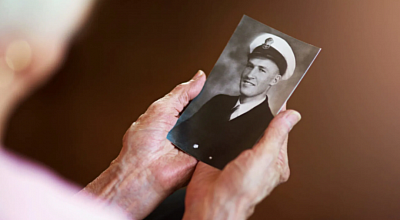Celebrate Life's Memories
How to Keep Memories Alive: A Guide to Cherishing Life's Moments
In a world that moves at lightning speed, memories can often feel like fleeting moments that slip through our fingers. Yet, those precious pieces of our past are what shape who we are and influence our present and future. Whether it’s the laughter of a family gathering, a breathtaking sunset, or a quiet moment of reflection, keeping memories alive is essential for our emotional well-being. Here are some creative and meaningful ways to preserve those unforgettable moments.
1. Capture the Moment: Photography
One of the simplest and most effective ways to keep memories alive is through photography. With the advent of smartphones, we all have the tools to capture spontaneous moments. Here are a few tips to enhance your photography:
Candid Shots: While posed pictures are great, candid shots often capture the emotion and authenticity of the moment.
Themes: Consider creating themed photo albums, like vacations or family holidays, to make the experience more enjoyable when you revisit them.
Photobooks: At the end of each year, compile your favorite photos into a photobook. This tangible keepsake will serve as a beautiful reminder of the year gone by.
2. Journaling: Writing Your Story
Writing is a powerful tool for memory preservation. By keeping a journal, you can articulate your thoughts, feelings, and experiences, providing context to the photos and mementos you collect. Here are some journaling tips:
Daily Entries: Set aside a few minutes each day to jot down thoughts or events. This habit helps you retain details that may fade over time.
Gratitude Journals: Consider starting a gratitude journal where you write about moments that made you smile or things you're thankful for each day.
Creative Writing: Don’t shy away from poetry, stories, or reflections. Get creative and let your emotions flow onto the page.
3. Create a Memory Jar
A memory jar is a wonderful way to collect memories throughout the year. Here’s how to create one:
Materials: Grab a jar (it can be decorative or simple) and some slips of paper.
Contributions: Encourage family members to write down their favorite moments and experiences on the slips of paper. These could include achievements, funny quotes, or moments that made them happy.
Yearly Tradition: At the end of the year, gather together to read through the slips and relive those beautiful moments. This practice not only preserves memories but also strengthens relationships.
4. Digital Archives: Embrace Technology
In today’s digital age, there are numerous ways to keep memories alive online:
Social Media Albums: Create private albums where you upload photos and share memories with friends and family. Platforms like Instagram allow you to create a visual diary.
Cloud Storage: Use cloud storage solutions to save important documents, photos, and videos. This protects your memories from being lost due to hardware failures.
Digital Scrapbooking: Explore digital scrapbooking applications that allow you to design and organize your memories creatively.
5. Engage the Senses: The Power of Mementos
Mementos created from significant events can evoke powerful memories. Here’s how to incorporate sensory experiences:
Art and Crafts: Create art pieces, like paintings or scrapbooks, to represent specific moments or feelings.
Scent Memories: Scents can trigger memories more intensely than visuals. Use candles, perfumes, or essential oils that remind you of specific times or places.
Audio Memories: Compile playlists or playlists of songs that hold special meanings or remind you of certain times in your life.
6. Storytelling: Share and Celebrate
Sharing your memories with others can enrich them even further. Consider these avenues:
Family Gatherings: Organize family storytelling nights where everyone can share their favorite memories.
Blogging/Vlogging: Start a blog or vlog chronicling your life experiences. Not only will this help preserve your memories, but it can also inspire others.
Legacy Projects: Create a family history project where you gather stories from older generations. This can be done through interviews or written accounts, preserving your family’s heritage.
Conclusion
Memories are the threads that weave together the tapestry of our lives. Although time may blur the details, the heart of our experiences can endure with the right approach. By actively engaging in preserving our memories—whether through photography, journaling, mementos, or sharing stories—we enrich our lives and celebrate the moments that truly matter. So, let’s make a conscious effort to keep our memories alive for ourselves and for future generations. After all, every moment is worth cherishing.
Eulogy Writing Tips: Honoring a Loved One’s Memory
Writing a eulogy can be one of the most challenging tasks you will face in your life. The pressure to capture the essence of a person you love in a few spoken words can feel daunting. However, a eulogy is an opportunity to celebrate that life, reflect on cherished memories, and provide comfort to those who are grieving. Here are some practical tips to guide you through the eulogy writing process.
1. Understand the Purpose
First, recognize that a eulogy is not just a list of achievements or a formal biography; it is a heartfelt tribute celebrating the life and personality of the deceased. Aim to share anecdotes, insights, and personal reflections that showcase their character, their passions, and the impact they had on the lives of those around them.
2. Gather Information
Before you begin writing, take time to gather information from family members and close friends. Share stories that reveal the person's quirks, values, and contributions. This collaboration can help paint a more complete and loving portrait of your loved one.
3. Organize Your Thoughts
Start by jotting down key themes or moments you want to include. Organizing your ideas can help streamline the writing process. Consider structuring your eulogy with the following sections:
Introduction:
Share your relationship to the deceased and why this moment is important.
Body: Share stories, qualities, and experiences that exemplify who they were. You can divide this section into categories such as family, career, hobbies, and personal quirks.
Conclusion: End with a summary of their legacy and a heartfelt farewell.
4. Be Authentic and Personal
Use your own voice when writing the eulogy. Authenticity resonates deeply and can provide comfort to those listening. Feel free to include humor where appropriate—many people appreciate light-hearted stories that evoke laughter amid tears. The goal is to reflect the personality of your loved one accurately, reminding everyone of the joy they brought into the world.
5. Keep it Short and Sweet
Aim for a length of 5-10 minutes when delivering the eulogy. A concise but impactful message is often more memorable. Be mindful that friends and family members present may be undergoing their own emotional experiences, so clarity and brevity can be incredibly effective.
6. Practice Before the Day
Once you've written the eulogy, practice delivering it several times. Rehearsing can help reduce anxiety on the day of the service and allows you to gauge the flow of your words. If possible, practice in front of a supportive friend or family member who can provide constructive feedback and emotional support.
7. Prepare for Emotions
It’s natural to feel a wave of emotions when delivering a eulogy. Be kind to yourself; it’s okay to pause for a moment if you feel overwhelmed. If needed, have some tissues on hand and take a deep breath to steady yourself. Remember, those present will understand and empathize with your feelings.
8. Seek Inspiration
If you're feeling stuck, read examples of eulogies from notable figures, or search for quotes that embody the essence of your loved one. Drawing inspiration from others can spark ideas or provide clarity on how to express your thoughts.
9. Consult with Others
If you're unsure about certain parts of your eulogy, don’t hesitate to ask other family members or friends for their input. They might offer suggestions or insights that can enhance your tribute and ensure it aligns with the memories shared by others.
10. Deliver with Love
Ultimately, the most crucial aspect of your eulogy is the love and respect you communicate through your words. The love you felt for the deceased and the joy of sharing their story can be felt by those listening. Embrace the opportunity to honor their memory as a fitting celebration of their life.
Writing a eulogy is a labor of love, and while it might feel overwhelming, it can also be an incredibly healing process. Use this opportunity not only to commemorate your loved one’s journey but also to connect with those who share in the grief. A heartfelt eulogy can provide solace and remind everyone that while life is transient, the love and memories we create endure forever.


